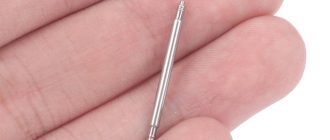“Think your leather bag is real? Try this test.” Fake leather is getting so good it fools even experts 👜🤔 Don’t get scammed—see the simple trick and other tips in the article 👇📸
Genuine leather products are always in demand—and for good reason. They’re stylish, durable, and timeless. But with so many leather lookalikes on the market today, it’s getting harder to tell the real thing from clever imitations. Whether it’s a handbag, a pair of shoes, or a wallet, sellers don’t always make it easy to know what you’re paying for.
If you want to avoid being fooled at the store, here’s a rundown of practical tricks you can use to check if something is truly made from leather—starting with one very simple test I always do before buying.
Not long ago, identifying real leather was simple: give it a sniff, feel it, maybe even crumple it a little. Real leather has a distinct scent and texture. But today’s synthetic leathers can look—and even smell—convincingly real. Some manufacturers even use leather-scented sprays to throw you off.

Artificial leather used to be associated with cheap, plasticky materials. Now, high-quality eco-leather mimics the real thing so well that even experienced shoppers can get confused. So how do you know for sure?
One of the simplest ways to check leather in-store is by using a damp wipe. I always carry one with me just in case. Press it gently against the item for about 10 seconds. If it’s real leather, you’ll see a darkened spot where the moisture was absorbed—but don’t worry, it dries quickly without a trace.

Fake leather usually won’t absorb moisture the same way, so no mark will appear. Just make sure the wipe doesn’t contain oils or alcohol, as those could damage some materials.
Here are a few more tried-and-true methods to check what you’re dealing with:
The Warmth Test: Press your hand against the item for 15 to 30 seconds, then touch it to your cheek. Real leather holds warmth; fake leather stays cool.

Inspect the Edges: Look closely at the seams. Real leather often shows raw, uneven edges. Faux leather, on the other hand, usually has neatly folded or sealed edges to hide imperfections.
The Needle Trick: If you’ve already bought the item and want to be sure, use a fine needle to gently prick a hidden area. Real leather is soft and the needle glides through; faux leather tends to resist or squeak.

Flex It: Gently bend or press the material. Real leather springs back quickly and doesn’t change color. Faux leather may wrinkle, stretch awkwardly, or shift shades under pressure.
Pore Patterns: Look at the grain. Leather has natural, irregular pores. Fake leather often has a repeated, artificial-looking pattern.

Many reputable brands attach a small material swatch to their items. If the tag is diamond-shaped, that typically indicates synthetic material. For real leather, the tag might say “genuine leather” or display translations like vera pelle (Italian), cuir (French), or echtleder (German).

Even with all the tips to identify leather, it’s worth noting that many people are now choosing to avoid animal-based products entirely. With increasing awareness around animal welfare, some shoppers are turning to ethical alternatives that look and feel just as luxurious.
View this post on Instagram
Whether you’re team leather or prefer cruelty-free options, it’s always good to know exactly what you’re buying. Don’t let anyone sell you a synthetic product at a premium leather price. And if you’ve got your own leather-checking tip or trick, share it in the comments—your advice might just save someone from making an expensive mistake!







